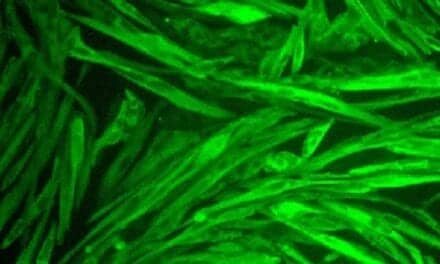A group of researchers have been able to overcome technical limitations of urinalysis via a novel electroanalytical technique that permits the co-detection of dopamine (DA) and uric acid (UA) in urine samples even in the presence of ascorbic acid (aa).
Urinalysis, or the detection and estimation of various pathophysiological substances in urine samples, is routinely recommended by physicians for disease diagnosis. Because pathology labs need to simultaneously determine the urinary levels of multiple substances for urinalysis, techniques that permit co-detection of disease are necessary. However, such co-analyses sometimes present with technical hurdles. In the case of urine samples, the relatively higher concentrations of AA in urine interferes with the simultaneous detection of DA and UA, both of which are present at relatively lower levels.
In the study that was published in the Journal of Pharmaceutical Analysis, the researchers—led by Associate Professor Dongdong Zhang of Xi’an Jiaotong University, China—describe how they combined a nanocomposite mixture, which had an average grain size of 10– meters or more, made up of gold nanoparticles (AuNPs), a special (conducting) polymer, and electrochemically-treated graphene oxide over a conventional glassy carbon electrode (GCE), to get a superior electrode for use in their technique. A GCE combines the properties of glass with those of graphite. However, it needed to be modified for the selective and simultaneous detection of DA and UA in the presence of high concentrations of AA for urinalysis.
To this end, the researchers employed a combination of chemical and electrochemical methods. They started with poly (3,4-ethylenedioxythiophene), or PEDOT, which is a highly conductive polymer with much promise in the field of biosensors.
“PEDOT can be overoxidized to obtain OPEDOT, whose hydrophilicity and unique properties make it useful in electroanalytical applications,” says Zhang. “However, since OPEDOT is not as good an electrical conductor or catalyst, it is modified with suitable nanomaterials, in this case, gold nanoparticles.”
The PEDOT-AuNPs were chemically synthesized from chloroauric acid and 3,4-ethylenedioxythiophene at room temperature. The addition of graphene oxide (GO) resulted in the formation of a homogeneous suspension of PEDOT-AuNPs-GO. This suspension was then dropped onto the surface of a GCE and dried. Finally, following an electrochemical procedure, the nanomaterial OPEDOT-AuNPs-ERGO/GCE was successfully fabricated and readied for bioanalytical measurements.
When used, the modified electrode was able to simultaneously detect extremely tiny amounts of DA (1 mM) and UA (5 mM) under physiological conditions, even in the presence of a large excess (1.0 mM) of AA.
“Our novel, graphene-based, ternary composite, with its advantageous features, is a promising candidate for electroanalytical and clinical applications,” says Zhang.
Featured image: Researchers develop an efficient electroanalytical technique for the sensitive detection of substances in laboratory and clinical samples for urinalysis. Photo: Journal of Pharmaceutical Analysis





